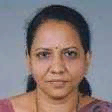International Journal of Image, Graphics and Signal Processing (IJIGSP)
IJIGSP Vol. 7, No. 4, 8 Mar. 2015
Cover page and Table of Contents: PDF (size: 520KB)
A Dynamic Security Protocol for Face Recognition Systems Using Seismic Waves
Full Text (PDF, 520KB), PP.28-34
Views: 0 Downloads: 0
Author(s)
Index Terms
Face Recognition, Pseudo-Random Number Generator, Seismic waves, True Random Number Generator
Abstract
Face recognition system is one of the robust means of authentication. It involves comparing the faces of an individual against a set of images in the training database. Thus the security issues pertaining to the training database is very critical. This paper aims at providing security to the images in the training database by empowering the encryption algorithms using a secure Random Number Generator (RNG). To facilitate this, the seismic waves are used as seeds to drive the Pseudo-Random Number Generators (PRNGs). The efficiency of seismic waves as a True Random Number Generator (TRNG) was evaluated using two statistical suites. Also, the proposed TRNG is compared against other existing RNGs. It was found that the degree of randomness rendered by the proposed system was in good agreement like the other existing generators. The proposed system was found to be cost-effective, portable and easy to maintain.
Cite This Paper
Sheela Shankar, V.R Udupi,"A Dynamic Security Protocol for Face Recognition Systems Using Seismic Waves", IJIGSP, vol.7, no.4, pp.28-34, 2015. DOI: 10.5815/ijigsp.2015.04.03
Reference
[1]Eleyan, Alaa. "Enhanced Face Recognition using Data Fusion." International Journal of Intelligent Systems and Applications (IJISA) 5.1 (2012): 98. DOI: 10.5815/ijisa.2013.01.10.
[2]Gurumurthy, Sasikumar, and B. K. Tripathy. "Design and Implementation of Face Recognition System in Matlab Using the Features of Lips." International Journal of Intelligent Systems and Applications (IJISA) 4.8 (2012): 30. DOI: 10.5815/ijisa.2012.08.04.
[3]Fabio Pareschi, "Implementation and Testing of High-Speed CMOS True Random Number Generators Based on Chaotic Systems", IEEE TRANSACTIONS ON CIRCUITS AND SYSTEMS—I: REGULAR PAPERS, VOL. 57, NO. 12, DECEMBER 2010. DOI: 10.1109/TCSI.2010.2052515.
[4]J. Daemen and V. Rijmen, "The Design of Rijndael: AES—The Advanced Encryption Standard", New York: Springer-Verlag, 2002.
[5]A. J. Menezes, P. C. van Oorschot, and S. A. Vanstone," Handbook of Applied Cryptography", Boca Raton, FL: CRC, 1996.
[6]J. Roy, F. Koushanfar, and I. Markov, "EPIC: Ending piracy of integrated circuits", in Proc. IEEE Des. Autom. Test Eur. (DATE), 2008, pp. 1069–1074.
[7]L. Blum, M. Blum, and M. Shub, "A simple unpredictable pseudorandom number generator," SIAM J. Comput., vol. 15, pp. 364–383, May 1986.
[8]Persaud N., "Humans can consciously generate random number sequences: a possible test for artificial intelligence", Med Hypotheses 2005;65:211–4.
[9]Ma?gorzata Figurska, Maciej Stan′czyk , Kamil Kulesza, "Humans cannot consciously generate random numbers sequences: Polemic study", Medical Hypotheses (2008) 70, 182–185, Elsevier. DOI: 10.1016/j.mehy.2007.06.038.
[10]Brown RG, Soliveri P, Jahanshahi M., "Executive processes in Parkinson's disease – random number generation and response suppression", Neuropsychologia 1998; 36(12):1355–62.
[11]Brugger P, Monsch AU, Salmon DP, Butters N., "Random number generation in dementia of the Alzheimer type: a test of frontal executive functions",Neuropsychologia 1995; 34(2):97–103.
[12]Pollux PMJ, Wester A, Haan EHF., "Random generation deficit in alcoholic Korsakoff patients", Neuropsychologia 1995;33:125–9.
[13]J. Szczepanski), E. Wajnryb, J.M. Amigo, Maria V. Sanchez-Vives, M. Slater, "Biometric random number generators", Computers & Security (2004) 23, 77e84, Elsevier. DOI: 10.1016/S0167-4048(04)00064-1.
[14]Chien-Yuan Huang, et.al, "A Contact-Resistive Random-Access-Memory-Based True Random Number Generator", IEEE ELECTRON DEVICE LETTERS, VOL. 33, NO. 8, AUGUST 2012.
[15]Ben-Menahem, Ari, and SarvaJit Singh. Seismic waves and sources. Courier Dover Publications, 2012.
[16]RabiaJafri, Hamid R. Arabnia, "A Survey of Face Recognition Techniques", Journal of Information Processing Systems, Vol.5, No.2, June 2009. DOI : 10.3745/JIPS.2009.5.2.041.
[17]Ali Javed, "Face Recognition Based on Principal Component Analysis, I.J. Image, Graphics and Signal Processing (IJIGSP), 2013, 2, 38-44. DOI: 10.5815/ijigsp.2013.02.06.
[18]Alireza Tofighi, Nima Khairdoost, S. Amirhassan Monadjemi, Kamal Jamshidi, "A Robust Face Recognition System in Image and Video", I.J. Image, Graphics and Signal Processing (IJIGSP), Vol. 6, No.8, July 2014, pp.1-11. DOI: 10.5815/ijigsp.2014.08.01
[19]P.S. Hiremath, Manjunatha Hiremath, "3D Face Recognition based on Radon Transform, PCA, LDA using KNN and SVM", I.J. Image, Graphics and Signal Processing (IJIGSP), Vol. 6, No. 7, June 2014, pp. 36-43. DOI: 10.5815/ijigsp.2014.07.05.
[20]Available at: http://www2.ece.ohio-state.edu/~aleix/ARdatabase.html.
[21]Stipcevic, Mario. "Quantum random number generators and their use in cryptography." MIPRO, 2011 Proceedings of the 34th International Convention.IEEE, 2011.
[22]Jennewein, Thomas, et al. "A fast and compact quantum random number generator." Review of Scientific Instruments 71.4 (2000): 1675-1680.
[23]Available at: http://www.random.org.

